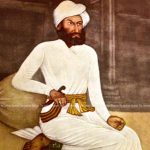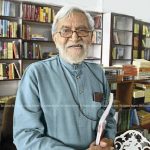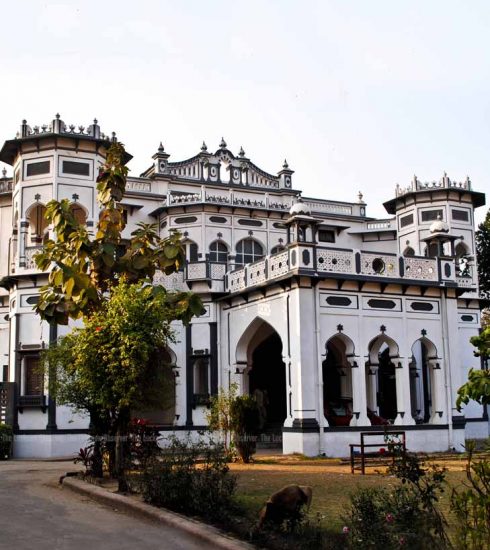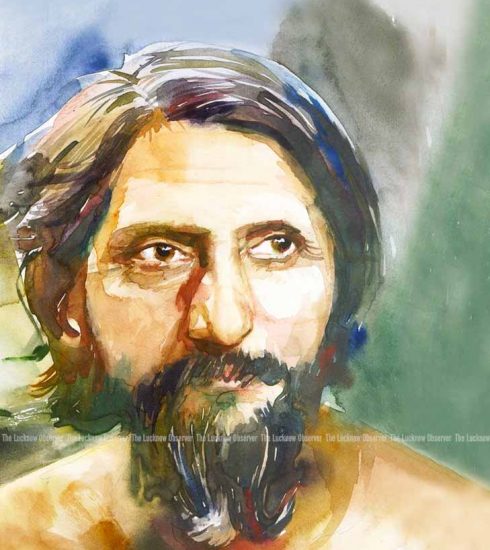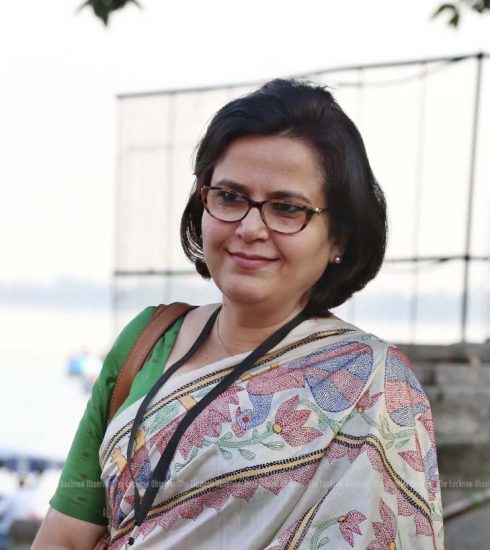Naiyer Masud aur Lucknow
Lucknow based Naiyer Masud’s contribution to the world of Persian and Urdu writing remains unparalleled.
As far as story telling is concerned, the scholar and writer is perfection personified. But it is his humility and cheerful disposition that makes him an even more rare human being.
Now a frail 77 years old, Masud seldom ventures out from his ancestral home, ‘Adabistaan’ in Lucknow’s Turiya Ganj or Victoria Road. This is a pity since the author must feel deprived of enjoying the colour, sound and sights of different parts of Lucknow, a city that has been the axis of his work in the past.
Masud admits to being emotionally attached to Lucknow and particularly to his home, ‘Adabistaan’. His attachment is such that he has practically almost never travelled outside the city. He lived in Allahabad for about four years to complete his doctorate but visited Lucknow every month.
He once went to Iran for half a month and has visited other cities but never for more than four or five days. Such is his pull for the city of his birth that it remains the main inspiration for his writing.
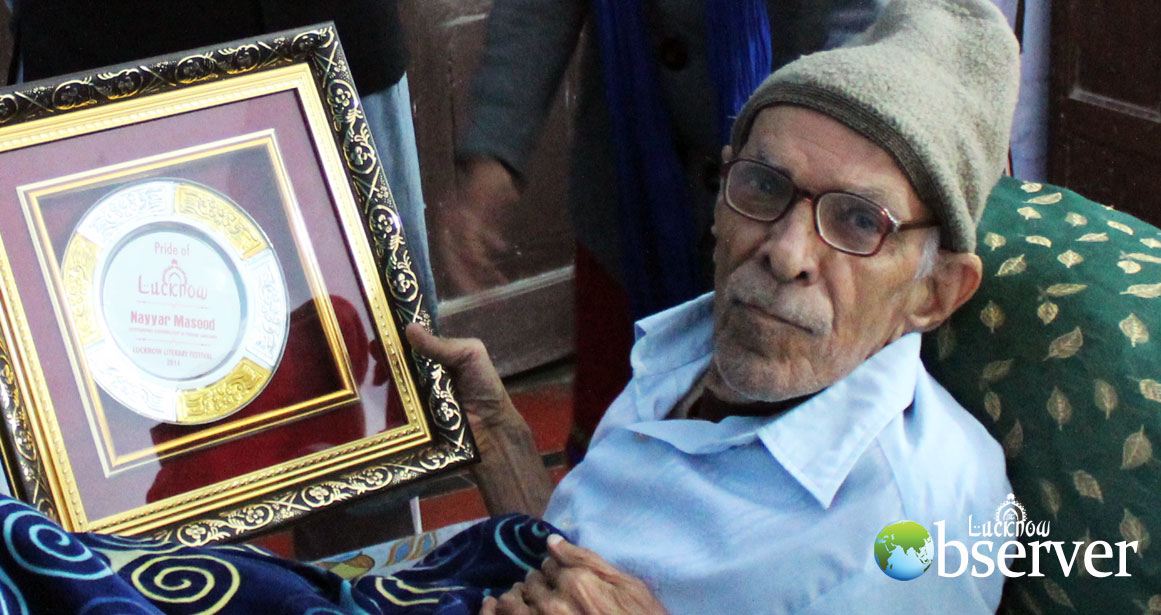
Lucknow
In an interview with Asif Farrukhi, Pakistani author and critic Masud reveals that his whole life has passed in Lucknow, in the same house. “I have never really written anything outside of this house… Suppose I have a story to write and I’ve gone out of town for a couple of days: not a line of it gets written. Someone said that when you go out somewhere you gain experiences and ideas, but if I lived outside Lucknow I wouldn’t be able to write anything at all. Or, I wouldn’t be able to write like this”.
In his own words Masud is a ghar ghusna or a stay-at-home. If he goes somewhere for a couple of days, he starts to miss home. This deep love of Masud for Lucknow is inevitably obvious in his writing even without him mentioning it. For example, he does not have to say that his character wears an ‘angarkha’ or a ‘qaba’ but the reader is still transported into the ambience of Lucknow of yore and made to feel that he is alive in the city along with other characters in Masud’s narrative.
Masud’s works are precious for their glimpse into many unseen aspects of Lucknow and the nawabs. As he himself says that he always wants to explore unknown events and aspects of the history of Avadh and Lucknow to reveal the very special character of this place.
Masud is an observer par excellence who gives microscopic details where necessary and Lucknow is a city that he has observed in loving detail. Masud is largely responsible for rescuing the memory of Wajid Ali Shah as benevolent ruler most beloved of his subjects for his many goodness as a human being. This is in exact contrast to the image of Wajid Ali Shah projected by European historians whose records leave a caricature of the last ruler of Avadh as one who had spent his entire time in dance, music and women.
Masud repeats that his stories try to soak in the atmosphere of the city. “A city, that concerns me a great deal. Not only because it is my birth place, but also because it is, in reality, a wondrous city. I have witnessed a lot here, including decay,” Masud often says.
His earlier wanderings made him appreciate the exquisite architecture of the city. He is particularly fond of the mihrabs or arches on buildings here.
Arches
“Arches affect me personally. I find them very evocative. The mere sight of an arch touches off a whole train of thought in me. I won’t call it a symbol. An arch is not a symbol of anything. Nothing at all. But it never fails to exert a hypnotic pull. Countless stories lurk in an arch. Maybe I feel this way because I was in love with Washington Irving’s Tales of the Alhambra and their many references to arches. Something else about an arch: even when the entire building has crumbled away, the arch still stands, no doubt because of its peculiar structural properties. Formerly there were quite a few arches in Lucknow, standing hushed in a landscape of decay. Today only a few of them remain. I’ve seen a lot of them. If you have the time, come along with me. You’ll see a lone arch, with broken brick walls stretching for several furlongs in all directions. Looking closely at the site, an entire mansion will begin to take shape in your mind. You will wonder about the original mansion. How did it look exactly? What kind of people lived in it? Since I’m knowledgeable, since I live here in Lucknow, since I’ve either seen buildings or heard accounts of them and their inhabitants from my elders, since I’m interested in the history of Avadh, so whenever I see an arch, a verandah, a passageway, all those things, those in the background as well as those which I was able to see before they were swept away, they all begin to crowd before me. Inevitably, those structures and their silent, ended lives begin to shine dimly through my work…”
Masud is indeed a unique combination of research and narrative. While his impeccable research is based on facts, his imagination and flight of fantasy is ever ready to explore new horizons.
For example his second collection of short stories ‘Taus Chaman Ki Mayna’ published in 1998 draws a very real image of the ‘tehzeeb’ of Lucknow which had started to decay around the early 1800’s. This story is also important as it underscores the political scenario of that time when the influence of the British and their involvement in every sphere of life was spreading fast.
Marsiya
Masud inherited his love for the Urdu Marsiya from his scholarly father. His interest in the history of Urdu ‘Marsiya’ led him to consolidate and compile a rare biography of Mir Anees that sketches a vivid picture of the ‘tehzeeb’ and environment of the times of Anees and Dabeer. The culture of those days, the effect of politics on writers and poets and the reason why Mir Anees renounced Marsiya Khwani in Lucknow are shared with readers who are inevitably transported to an unknown era that no longer exists but in which they feel most at home.
A professor of Urdu and Persian, Masud comes from a family of Persian origin. His grandfather, Syed Murtuza Husain was a well-known Hakeem and lived in a district of Unnao. He came to Lucknow to study further and later went to Bahraich in search of work. His father Syed Masud Hasan Rizvi, leading scholar was born in 1893, and Masud saw the light of day on 16 November in 1936 in the lap of much literary activity.
He wrote Simiya, his first short story at the age of 12 years but it was unfinished and Nusrat got published first. Later on completion it was published in collection titled on the story itself. Masud has also written some children’s stories like ‘Qissa Sotey Jaagtey Abul Hasan Ka’ and more than 150 articles that have been published in leading Indian and Pakistani journals. He has translated many Persian works in Urdu and has been felicitated numerous times for his various works.
Writer as artist
Apart from his literary strokes, as a story teller and researcher, few are aware that Masud is a fine sculptor and painter too. Undeniably a precious person whose love for Lucknow is the sturdy pillar on which the literary tradition of Lucknow continues to journey with pride.
Saira Mujtaba
(Published in The Lucknow Observer, Volume 1 – February 2014)
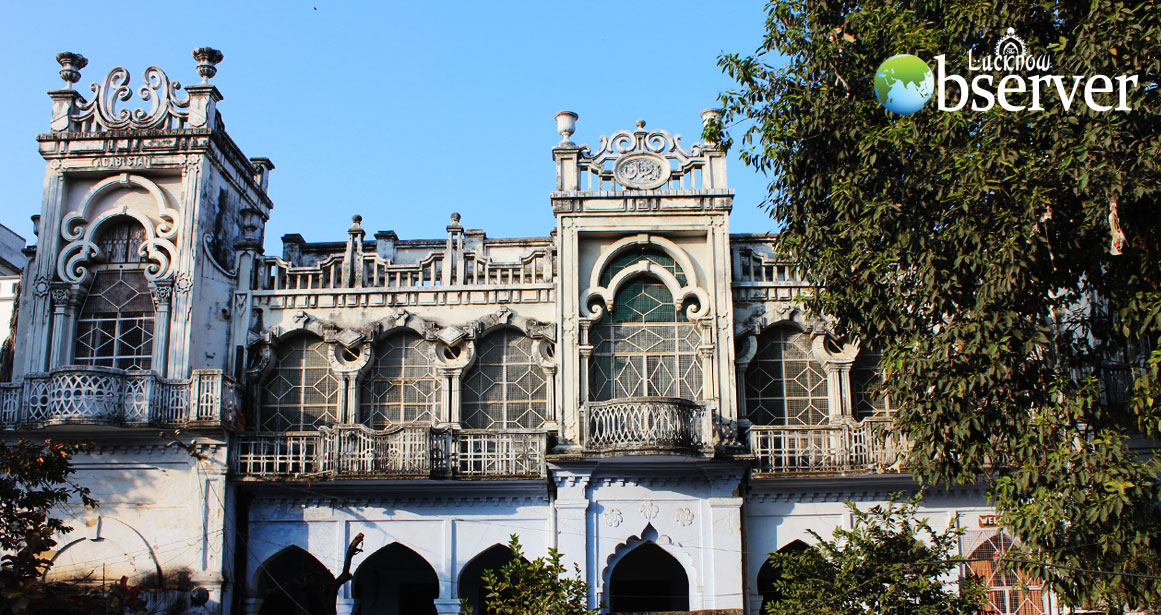
Adabistan




